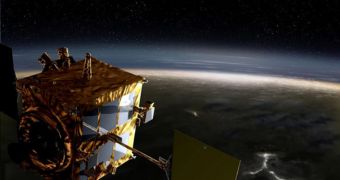Last month, as a Venus-bound spacecraft of the Japan Aerospace Exploration Agency (JAXA) was attempting to achieve orbital insertion around our neighboring planet, a faulty engine valve caused the mission to fail. Now, JAXA officials say there may still be hope for the malfunctioning probe.
After the original shock associated with the failure to achieve orbital insertion, experts calculated that the spacecraft was not completely lost, and that it could re-attempt to complete the aforementioned maneuver in late 2016 – early 2017.
According to new data, it would appear that JAXA has the possibility to attempt to conduct the maneuver one year earlier than originally thought.
The announcement was made in an article published in the Japanese newspaper Mainichi Daily News, Space reports. Apparently, JAXA officials will only have to wait five years, instead of six.
Today, January 6, marks the one month anniversary of Akatsuki overshooting Venus. In early December, it reached our neighboring planet according to plan, and go within 342 miles (550 kilometers) of its surface.
At this time, it was supposed to end its six-month travel with a deceleration maneuver. During this stage, it was supposed to fire its engines in reverse, so as to allow for Venus' gravity to capture it in orbit. The engines were supposed to fire for exactly 12 minutes.
Telemetry data sent back by Akatsuki showed that a faulty valve prevented the burn, so the engines shut down after just 2 and half minutes. This meant that the spacecraft simply traveled too fast to allow itself to be captured by Venus.
“At the speed the probe was moving under our first retry plan, it would probably have been impossible to make the orbital insertion,” the newspaper quotes a JAXA source as saying.
“We hope to explore every possibility, and make an exploration of Venus a reality,” the same source adds. One of the advantages of moving the new attempt a bit forward in time is that the probe will be subjected to far less solar radiation.
The radiation can easily harm the electronic equipments aboard the Venusian orbiter, which was launched on May 20 to study the atmosphere of Venus. In all respects, it is the first weather satellite to orbit another planet.
It shared the same H-IIA delivery system with the IKAROS solar sail demonstrator, which showed for the first time that it's possible to propel and steer a spacecraft using the power of photon streams alone.

 14 DAY TRIAL //
14 DAY TRIAL //